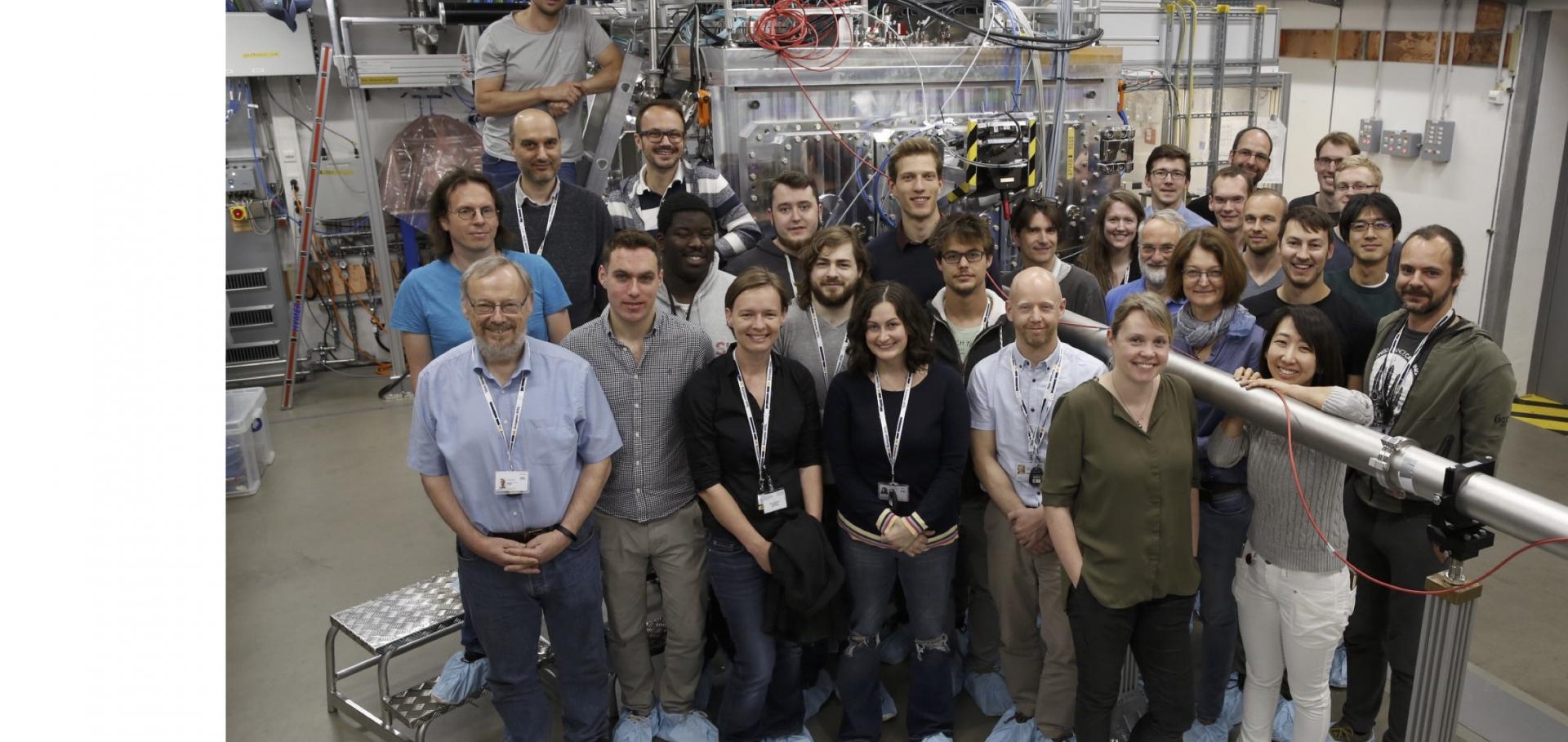Probing the Electronic Structure of Warm Dense Nickel via Resonant Inelastic X-Ray Scattering
Physical Review Letters American Physical Society (APS) 125:19 (2020) 195001
Mapping the electronic structure of warm dense nickel via resonant inelastic x-ray scattering
Physical Review Letters American Physical Society 125 (2020) 195001
Abstract:
The development of bright free-electron lasers (FEL) has revolutionised our ability to create and study matter in the high-energy-density (HED) regime. Current diagnostic techniques have been successful in yielding information on fundamental thermodynamic plasma properties, but provide only limited or indirect information on the detailed quantum structure of these systems, and on how it is affected by ionization dynamics. Here we show how the valence electronic structure of soliddensity nickel, heated to temperatures of around 10 of eV on femtosecond timescales, can be probed by single-shot resonant inelastic x-ray scattering (RIXS) at the Linac Coherent Light Source FEL. The RIXS spectrum provides a wealth of information on the HED system that goes well beyond what can be extracted from x-ray absorption or emission spectroscopy alone, and is particularly well-suited to time-resolved studies of electronic-structure dynamics.Probing the electronic structure of warm dense nickel via resonant inelastic x-ray scattering
Physical Review Letters American Physical Society 125:19 (2020) 195001
Abstract:
The development of bright free-electron lasers (FEL) has revolutionized our ability to create and study matter in the high-energy-density (HED) regime. Current diagnostic techniques have been successful in yielding information on fundamental thermodynamic plasma properties, but provide only limited or indirect information on the detailed quantum structure of these systems, and on how it is affected by ionization dynamics. Here we show how the valence electronic structure of solid-density nickel, heated to temperatures of around 10 of eV on femtosecond timescales, can be probed by single-shot resonant inelastic x-ray scattering (RIXS) at the Linac Coherent Light Source FEL. The RIXS spectrum provides a wealth of information on the HED system that goes well beyond what can be extracted from x-ray absorption or emission spectroscopy alone, and is particularly well suited to time-resolved studies of electronic-structure dynamics.Measuring the oscillator strength of intercombination lines of helium-like V ions in a laser-produced-plasma
Journal of Quantitative Spectroscopy and Radiative Transfer Elsevier 256 (2020) 107326
Abstract:
We present results of measurements of the oscillator strength of intercombination lines of He-like Vanadium ions in high energy density (HED) laser-produced-plasmas and compare them with the simulations from commonly used codes and data from the NIST database. Whilst not yet sufficiently accurate to constrain different trusted atomic-physics models for the particular system studied, our results are in agreement with the available data within experimental error bars, yet differ from cruder approximations of the oscillator strength used in certain atomic-kinetics packages, suggesting that this general method could be further extended to be used as a measurement of the oscillator strength of additional atomic transitions under the extreme conditions that are achieved in HED experiments.An approach for the measurement of the bulk temperature of single crystal diamond using an X-ray free electron laser
Scientific Reports Nature Research 10 (2020) 14564


